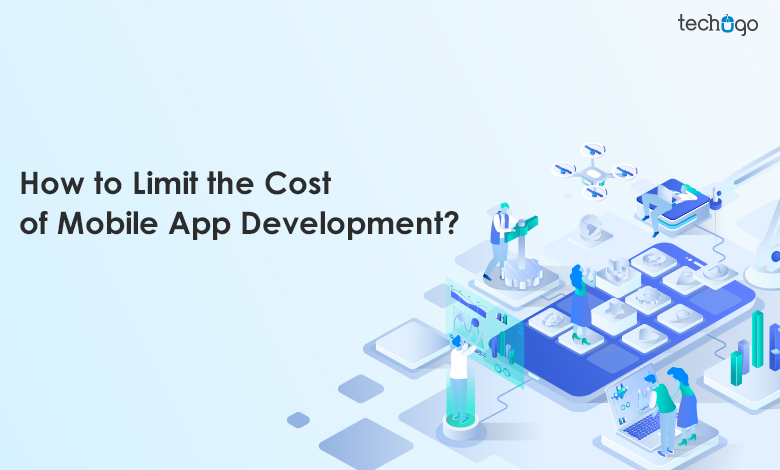Congratulations!
Since you’ve landed here, you must be planning to invest in a mobile application for your customers. Thus, are you looking for some primary information that influences the overall cost of app development?
Undoubtedly, mobile apps are now identified as a go-to solution for customers to get goods and services conveniently. This is why businesses are onboarding to develop a custom mobile app to boost their business mechanisms.
But do you know about the quotation in hand? If yes, keep it aside and learn about the actual cost to be invested in mobile app development.
First of all, what do you think motivates a consumer to download and use a mobile app? Indeed, it’s the seamless experience that an app offers is an intriguing factor. Therefore, the better the service and features you’ll offer your end users, the more success you’ll get.
Mobile applications are an exceptional tool for businesses trying to reach a wider audience and rope in a solid consumer base. However, after researching everything else, potential owners tend to question the app development cost and how they can limit the same.
Strategically, the cost can be defined based on numerous factors. Thus, further we’ll talk about some of the most common factors that influence the cost to build a mobile app, and how you can control the same.
Continue reading!
Also Read – Cost of Building an App Like Byju’s
Factors That Influence the Cost of Mobile App Development
Let’s take a look:
1. Business Engagement Model
Primarily, there are three business engagement models for developing an app. Thus, picking one of the three models entirely depends on a company’s size, scope, and complexity of the project. The three models are as mentioned below:
– Time and Material Model
This model enables calculating the cost based on the tools, technologies, and the number of hours invested in a product. Notably, the model is best suitable for long-term projects and dynamic scope as it allows the engagement of resources on a long-term basis.
– Fixed Price Model
Do you have a rigid scope for your project? This model is for you!
The fixed price model enables you to calculate the overall cost based on an app’s features, design, functionality, etc. Thus, the model works best for small and mid-sized businesses that have budget restrictions.
– Dedicated Team Model
Planning big? The dedicated team model has got you! This model enables hiring a team of developers, testers, designers, and whatnot to work solely on your project.
2. Target Audience
It goes without saying that every individual in the world can not be your app’s potential customer! Therefore, it becomes vital to figure out whom you would serve and the people willing to download the digital solution presented to you.
Once you’ve narrowed down your audience on the basis of gender, age, and other factors, you’ll be able to develop the app keeping the same in focus.
3. Free or Paid Application
The next step is to figure out if you want to roll out the app for free or paid. Notably, free apps can be downloaded from the App or Play stores, and users can access its services. On the other hand, paid apps earn money on the basis of the number of downloads.
4. App Category
The cost of mobile app development also depends on the type of app and its features like:
– Native or Cross-Platform Apps
Selecting a platform for your mobile app is one of the most important steps before you decide to make hefty investments in the development process.
Are you aware of your audience’s preferred and active platform? If yes, you can proceed with building native or cross-platform apps to reach a wider audience.
– Standalone Apps
What are standalone apps? Some of the best examples include a clock, calendar, and calculator!
These applications serve a specified purpose and are much simpler to build as compared to any other mobile app.
5. Customization
Being an app owner requires you to keep a check on your customer’s choices and preferences to drive revenue from your app. Therefore, work on an app with rich designs.
6. Maintenance and Marketing
Most businesses tend to overlook post-app maintenance and marketing. As vital as it is for app development, it impacts the app’s cost as maintenance involves enhancing the app designs, fixing bugs, and more.
Now is the time to answer one of the most popularly asked questions:
How Can an App Owner Limit the App Development Cost?
Go through the list of features that you have made. Indeed, it’s a lengthy one, isn’t it?
Now think about the value these features will add to the MVP version of your app. The answer seems uncertain, right?
Therefore, to optimize the app development cost, it would be best to emphasize the significant features for feasible solution development.
For instance, some people might prioritize incorporating modern technologies that might not offer value at the moment. Therefore, it’ll only add to the expense!
To Sum Up!
Still need assistance?
It’s time to get in touch with the best app development company for further insights into your app idea.
So, what are you waiting for?
Schedule your first consultation today, and get ready to touch the skies!





